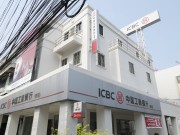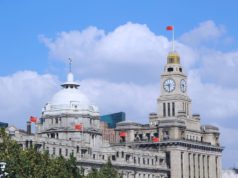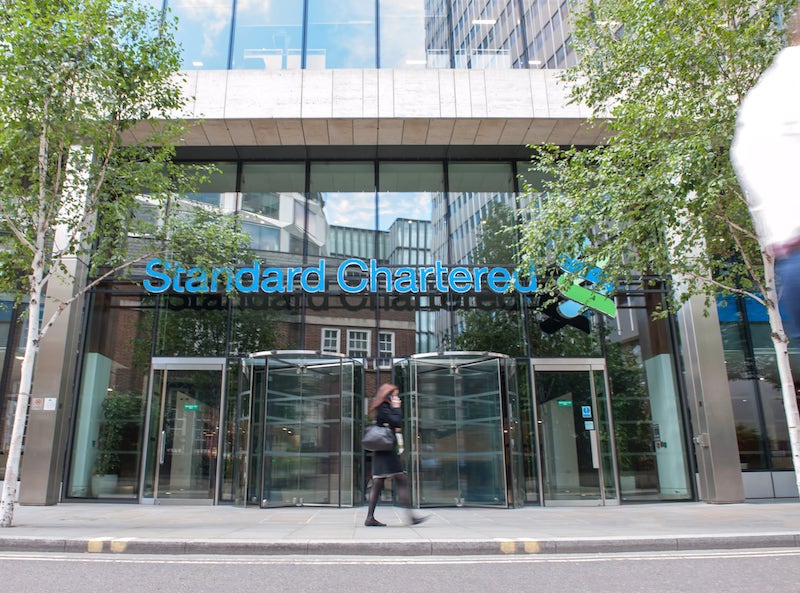Australia & Hong Kong Issue Observations from Joint Review of Foreign Exchange Activities, $6.6 Trillion Trading Volume Per Day
28th January 2022 | Hong Kong
Australia and Hong Kong have jointly issued observations from their review of foreign exchange activities, a financial market averaging $6.6 trillion trading volume per day. Australia and Hong Kong are important FX trading centres in the Asia-Pacific region, with Australian dollar and Hong Kong dollar among the top 10 currencies in global rankings by turnover. The Australian Securities and Investments Commission (ASIC) and the Hong Kong Securities and Futures Commission (SFC) launched a collaborative thematic review to assess their compliance with local regulatory requirements in their respective jurisdiction and adoption of industry guidelines (eg FX Global Code). The review includes onsite inspects and visits to to selected firms of global financial groups licensed by ASIC in Australia and the SFC in Hong Kong. See below for full Circular / Observations on Australia & Hong Kong Joint Review | Click here to download the document
“ Joint Review of Foreign Exchange Activities, $6.6 Trillion Trading Volume Per Day “
Circular on ASIC-SFC Thematic Review: Foreign Exchange

Circular on ASIC-SFC thematic review of global financial groups’ foreign exchange activities:
Foreign exchange (FX) is the world’s largest financial market by trading volume and is of systemic importance to the global economy. In April 2019, trading volume in the over-the-counter FX market averaged US$6.6 trillion per day1––the highest among all financial asset classes. Australia and Hong Kong are important FX trading centres in the Asia-Pacific region. The Australian dollar and Hong Kong dollar have been among the top 10 currencies in global rankings1 by turnover.
In view of the growing importance of the Asia-Pacific region’s FX market and the increasing complexity of regulating a market that involves diverse products and trading channels across different jurisdictions, the Australian Securities and Investments Commission (ASIC) and the Securities and Futures Commission (SFC) launched a collaborative thematic review. The review included onsite inspections of and a prudential visit2 to selected firms of global financial groups licensed by ASIC in Australia and the SFC in Hong Kong. The main aim was to assess their compliance with local regulatory requirements in their respective jurisdiction and their adoption of other industry guidelines (e.g. the FX Global Code3).
Observations and industry practices identified
This circular and its annexes highlight the regulators’ observations of the selected firms’ governance arrangements and internal controls. The SFC also reviewed the firms’ implementation of risk management measures in their FX business. For the avoidance of doubt, this circular and its annexes only apply to participants in Australia and licensed corporations in Hong Kong that engage in FX activities (collectively “participants”)4. More details of the reviews conducted by ASIC and the SFC are set out in Annex 1 and Annex 2, which provide an overview of the FX market landscape in Australia and Hong Kong and share observations and industry practices noted from the reviews.
I. Supervision and risk management
Supervision
Governance arrangements vary among the participants, but they should be commensurate with the size and complexity of the firms’ FX activities and the nature of their engagement in the FX market, taking the applicable rules and regulations into account. In some cases, FX activities are only ancillary to the main business, e.g. for hedging FX risk. Regardless of whether these activities are carried out as a separate business or an ancillary function, participants are reminded to supervise FX activities.
Appropriate supervision should be in place to cover the entire FX business and promote responsible engagement by the senior management and comprehensive oversight across different functions. Examples of good practices include clearly defining the roles and responsibilities in the three lines of defence, establishing control functions to monitor the front office’s risk-taking activities and promoting a strong risk culture which encourages staff at all levels to identify and escalate issues of concern to appropriate parties.
Risk management – SFC only
The SFC’s review noted all of the participants operated their businesses through multiple overseas-affiliated legal entities for principal or agency trading. For example:
(i) A participant, acting as an agent, engaged in futures and listed options trading in overseas exchanges on behalf of its clients. The trade orders were executed by its overseas affiliate which was a participant of overseas exchanges.
(ii) A participant, acting as a principal, booked risk positions through its own entity and offset the market risk by entering into back-to-back transactions with an overseas affiliate which managed the risk.
(iii) A participant engaged multiple legal entities across different jurisdictions to conduct FX activities. Under this business model, the overseas entities were the contracting entities with clients as well as risk booking and management centres even though the risk positions were originated from the participant in Hong Kong.
While the local entity may delegate risk management to its overseas affiliate, participants should review in a timely manner the counterparty risk arising from exposure to FX trades that are executed locally to avoid a build-up of excessive risks. In addition, participants should take reasonable steps to ensure that they operate within a holistic and robust risk management framework, with reporting processes and accountability clearly defined and suitably integrated across different jurisdictions.
II. Internal controls
Trade execution
Participants are reminded to ensure fairness and transparency when handling and executing client orders and acting as principal or agent. Participants should make sure that internal control policies and procedures are well-established and maintained, and controls are properly implemented. For example:
(i) Last look5
Last look is an execution practice in electronic trading activities whereby a firm that receives a trade request will have the final opportunity to accept or reject the request against its quoted price.
There have been concerns about whether last look would increase the costs borne by clients should a trade request be rejected. Participants are hence expected to provide clear disclosure to clients regarding their use of last look, e.g. applicability to the type of product, the basis for rejecting a client order and hold times and their symmetric or asymmetric application.
If last look is utilised, it should serve as a risk control mechanism which checks the validity of the proposed transaction and the consistency between the price of the trade request and the current price available to clients. It is a good practice that participants monitor the use of last look to ensure that client trade information is used appropriately for the intended purposes.
(ii) Protection of confidential information
In addition to protecting confidential information obtained during the last look practice, participants should implement robust controls to limit staff members’ access to client order information. Participants should adopt a “need to know” policy to ensure that only appropriate staff members could access the details of clients’ FX orders, e.g. the visibility of fixing orders should only be granted to staff who are responsible for handling them. Without proper monitoring and oversight of access to confidential information and appropriate system controls, conflicts of interest among the participant, its staff and clients may not be appropriately managed, e.g. staff members may take advantage of the clients’ trading intent and move market prices against them.
(iii) Mark-up6
Mark-up is a spread or charge which may be included in the final price of a transaction to compensate the firm for the risks taken, costs incurred and services rendered. Participants should disclose to clients how a mark-up is determined. As mark-ups are common in the FX market, participants should have policies and procedures in place to enable staff members determine appropriate and fair mark- ups. They should also have effective oversight of mark-up practices and an escalation process to ensure that these practices are consistent with their policies and procedures.
Post-trade surveillance
Given the fragmentation of FX trading infrastructure and platforms, investors may source liquidity or obtain price quotations from participants via multiple channels prior to order execution. Market surveillance and monitoring could then be a complex exercise with the presence of multiple communication channels. It is therefore important that participants establish effective supervision, control and exception handling procedures in the management of the trade life cycle to detect irregularities and suspicious transactions.
Staff personal dealing and training
To manage conflicts of interest, appropriate personal dealing policies and procedures should be established and provided to staff, particularly those who perform sales and trading activities and may come across confidential information, such as clients’ trade intent and order information. Staff members’ personal FX trading should also be subject to surveillance and monitoring in order for the participants to assess whether there is any potential misconduct.
Staff members should have sufficient skills and expertise to perform their designated roles and responsibilities effectively. Training should be appropriate, adequate, well-established, tailor-made and provided to relevant staff on an ongoing basis in respect of their roles and responsibilities. Training records should be kept for staff development purposes and compliance checks.
Should you have any queries regarding the content of this circular, please contact Market Supervision OTC at [email protected], or Ms Lorraine Chan at the Intermediaries Supervision Department of the SFC on 2231 1751 or at [email protected].
Intermediaries Supervision Department
Intermediaries Division
Securities and Futures Commission
End
SFO/IS/007/2022
1 See the Bank for International Settlements’ Triennial Central Bank Survey – Foreign exchange turnover in April 2019, issued on 16 September 2019.
2 The prudential visit was only conducted by the SFC.
3 The establishment of the FX Global Code was facilitated by the Foreign Exchange Working Group, which operates under the auspices of the BIS Markets Committee and consists of central banks from 16 jurisdictions. While the FX Global Code is a set of global best practice principles which supplement local rules and regulations, global financial institutions (such as the selected firms) have been voluntarily using adherence to the FX Global Code as one of the criteria for assessing their internal controls.
4 The term “participants” refers to banks, investment firms, inter-dealer brokers, agency brokers and hedge funds in Australia and licensed corporations in Hong Kong which engage in dealing in FX products that fall within the definitions of “securities” and “structured product” under Part 1 and Part 1A of Schedule 1 of the Securities and Futures Ordinance (SFO), respectively, or “futures contracts” as defined in section 1 of the SFO. Licensed corporations which are licensed to carry on Type 3 regulated activity (leveraged foreign exchange trading) in Hong Kong, as defined in Part 2 of Schedule 5 to the SFO, were excluded.
5 The term “last look” is defined in Principle 17 of the FX Global Code.
6 The term “mark-up” is defined in Principle 14 and Annex 2 of the FX Global Code.
Click here to download the document
Supplementary document
Report on the SFC’s review of global financial groups’ foreign exchange activities in Hong Kong
Sign Up / Register
Caproasia Users
- Manage $20 million to $3 billion of assets
- Invest $3 million to $300 million
- Advise institutions, billionaires, UHNWs & HNWs
Caproasia Platforms | 11,000 Investors & Advisors
- Caproasia.com
- Caproasia Access
- Caproasia Events
- The Financial Centre | Find Services
- Membership
- Family Office Circle
- Professional Investor Circle
- Investor Relations Network
Monthly Roundtable & Networking
Family Office Programs
The 2025 Investment Day
- March - Hong Kong
- March - Singapore
- July - Hong Kong
- July - Singapore
- Sept- Hong Kong
- Sept - Singapore
- Oct- Hong Kong
- Nov - Singapore
- Visit: The Investment Day | Register: Click here
Caproasia Summits
- The Institutional Investor Summit
- The Investment / Alternatives Summit
- The Private Wealth Summit
- The Family Office Summit
- The CEO & Entrepreneur Summit
- The Capital Markets Summit
- The ESG / Sustainable Investment Summit



































